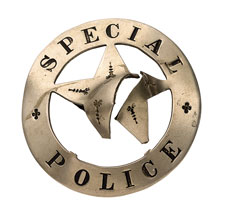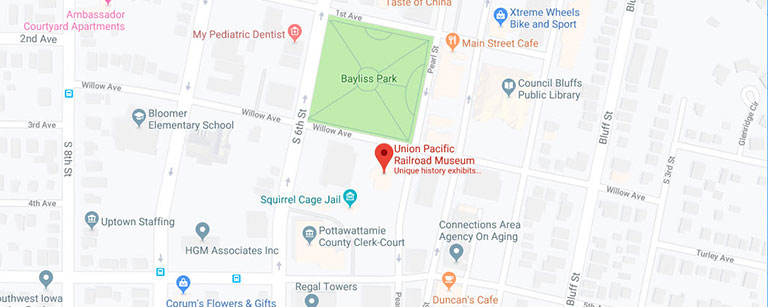Death of Union Pacific night watchman, Jess Sitton, Cheyenne, Wyo., 1922

Agent Jess Sitton's badge
Some artifacts tell a story just by looking at them. One the most powerful pieces in the Union Pacific Historical Collection is a 1920s railroad police badge worn by Cheyenne, Wyo., Agent Jess Sitton. The badge, torn apart by a bullet, tells the tragic story of the random violence sometimes seen by Union Pacific special agents in the line of duty.
In 1922, Sitton departed Sidney, Neb., where he served as sheriff, for Cheyenne to take a watchman's job with UP. Unfortunately, his new career and life were cut short on a snowy March night.
Unbeknownst to Sitton, a house had been looted by two thieves just a few blocks away. At least one of them had taken refuge in the rail yard behind a pile of railroad ties. During a routine patrol, Sitton examined the pile of ties with his flashlight, The thief emerged and shot twice. One bullet hit Sitton in the chest, piercing his badge.
Sitton fired his weapon from where he laid on the ground, but the thief escaped. Despite the best efforts of State commissioners and law enforcement agencies, the two men responsible for the robbery and the murder were never apprehended. Sitton died later that week from his wounds, leaving behind a wife and 14year-old son, who had traveled from Sidney to be with him in the hospital.
Perhaps the most interesting aspect of Sitton's badge is that it was not destroyed by the robber's bullet. The indentation, in fact, goes from the back of the badge through to the front. Sitton may have worn his badge on the inside of his jacket so it would not reflect light at night - enabling him to pull the jacket open to "flash" his badge when necessary.
Sitton's badge serves to remind all of us of the continuing sacrifice, and often dangerous duty, of railroad special agents.
Details of this incident were taken from the Union Pacific Historical Collection, "Special Agent Scrapbooks 1908-1930" specifically clippings from the Wyoming State Tribune, March 5-6, 1922.

